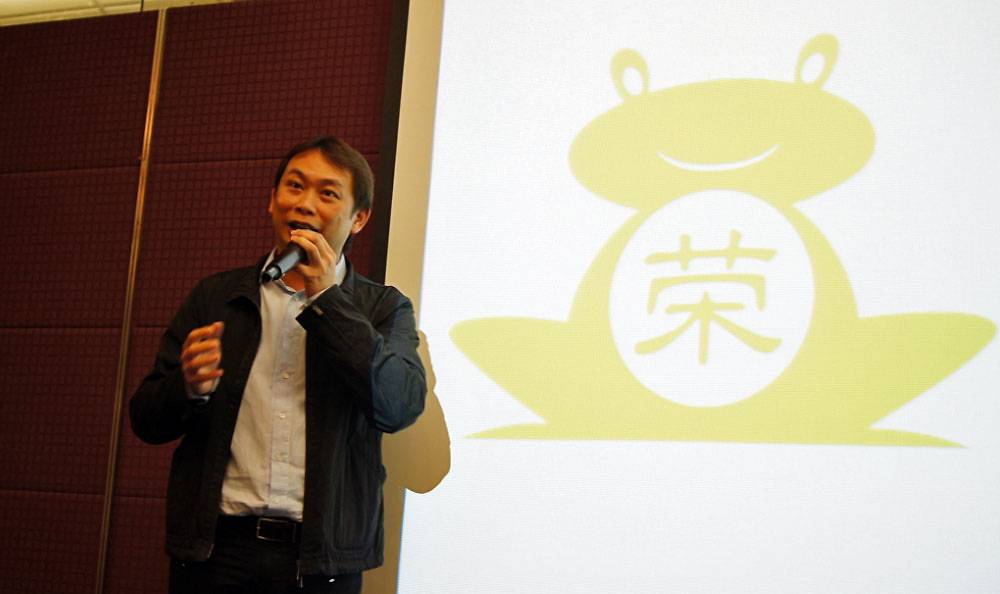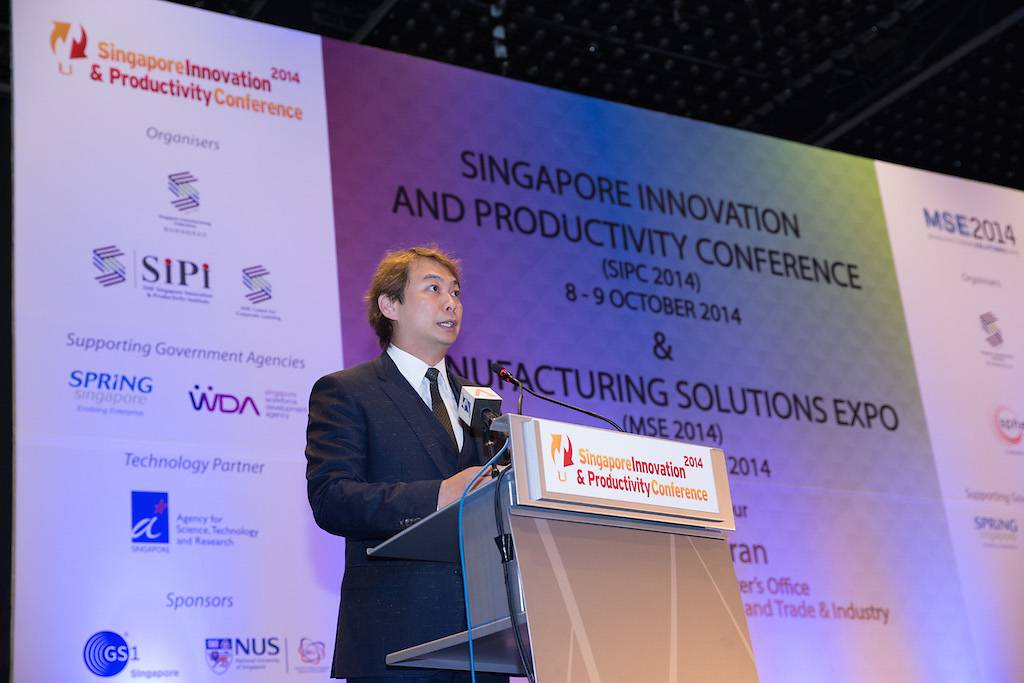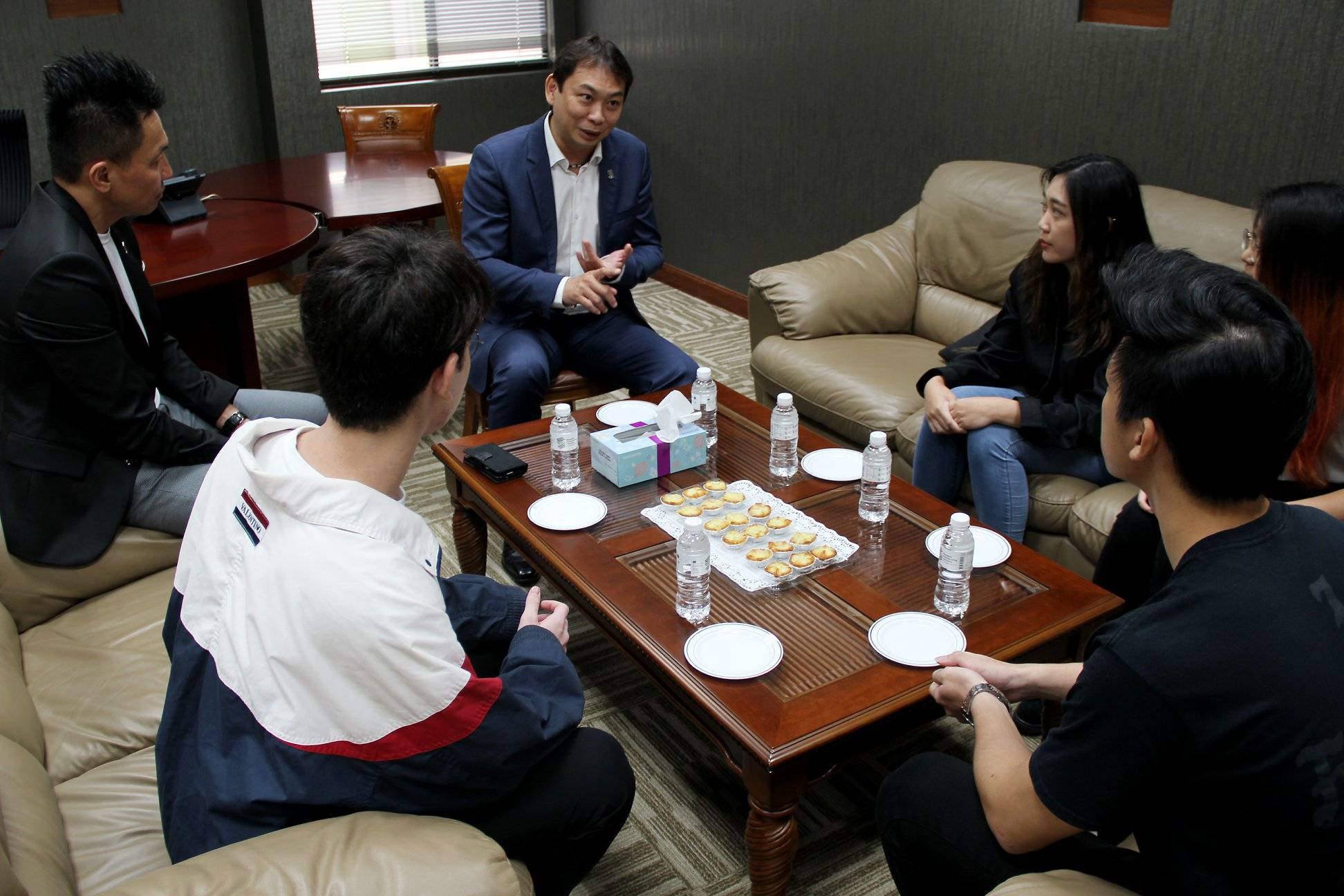SINGAPORE: In many ways, it would seem that Douglas Foo, founder and executive chairman of Sakae Holdings is going through tough times.
The 49-year-old owner of Sakae Sushi, one of Singapore’s leading conveyor belt sushi chains, had to close more than 10 of his 46 local outlets last year.
He was also embroiled in a 6-year legal battle against a former Sakae director who he accused of breaching his fiduciary duties.
It all started when his friend, Mr Andy Ong invited him to join his property development investment project.
Sakae became a minority shareholder in the joint venture real estate investment firm.
As Mr Foo sits before me, he looks every bit the well put-together and distinguished businessman but as he talks about the case, it becomes clear that beneath it all, he is still distressed by it.
To listen to the full interview, click here.
After all, Mr Ong was a close friend whom he had known since his National Service days.
He tells me he still feels “a lot of pain” when he thinks about what happened.
“I kept asking myself: What exactly went wrong? Why would anybody do that? And the final conclusion I have is: He was looking for a lot more even though he was making a good amount. It was just not enough for him.”
He is cautious about revealing too many details because while a judgment was passed in his favour last year, it has yet to be enforced and that could take “a long time”.
The legal battle cost about S$10 million and according to Mr Foo, had an impact on Sakae’s operations as staff had to spend time tracing documents to facilitate it.
I ask him what he has learnt from the episode.
“I have not become cynical because of it. I will not, because of one incident, lock everybody out. Maybe just be more cautious.”
However, it wasn’t just this that led to the business’s challenges.

Douglas Foo is still intent on making Sakae a global brand. (Photo: Sakae Holdings)
IS IT WORTH DOING BUSINESS IN SINGAPORE TODAY?
“The high cost structure in Singapore has actually evolved quite rapidly over the last couple of years. If you look at the malls today, retail has been impacted. So what happens when retail gets impacted? They all start to get replaced by F&B. The supply is increasing, but what’s happened to demand in the last few years? It’s been very stable. The market is extremely saturated. We’ve not seen growth as compared to the last decade and it tells you exactly what the macroeconomic conditions are and how the cost structure is going to be challenged.”
Clearly, rents are an issue, but when I ask him if he thinks the Government should intervene as some other businessmen have suggested, he says he feels otherwise.
“I think these are driven by free market forces – demand and supply. Where do you intervene? How do you intervene? At what stage do you intervene? What is a fair intervention approach? Those are very, very challenging, difficult questions to answer.
“High rents might be unfair from the perspective of the retailers. But what about the developers? How do you manage that fairness for them? So the best thing to do is to leave it to market forces. The landlords have to do their part to look at whether the rates are reasonable. If it’s not reasonable, market forces will correct that.”
It is natural that he would be able to see it from multiple perspectives considering that one of his strategies is to acquire real estate so that he is not constantly at the mercy of landlords.
“The likes of Starbucks and McDonald’s actually have a real estate strategy as well. So we, likewise, try to own about 20 to 30 per cent of the units that we operate.”
However, he says he has noticed more and more people going into business, but not having thought it through enough to sustain it, which is partly why the market is saturated today.
But there is really no way to control this, he concedes.
“There’s never an ideal situation in business. If you never try, you never know. So I think if you are going to start to tell people not to go into this area because it is challenging, it won’t work because there will still be people who want to try it out. Some succeed. Some don’t. That’s part and parcel of life.”
While Sakae Sushi outlets in Singapore are dwindling, they are growing across the rest of Southeast Asia.
It has 40 in Malaysia and three in Myanmar. It also has 80 associate restaurants in which it holds stakes in the region.
Its brands include Sakae Teppanyaki, Sakae Delivery and Hei Sushi.
“We want to be a global brand, so we should focus on markets that are ready for our product.That has always been my dream – to have a global brand from Singapore.”
I wonder if he feels it might be a better bet to leave Singapore altogether.
He confesses that he has been discussing this possibility with his colleagues more often recently.
“But my colleagues are very passionate that we are born here, so we should continue to have a presence here.”
He clearly feels differently.
“I’ve considered leaving. I think there are many markets in the world that are much more easier to operate in and are much more rewarding. Some are really at the beginning phase of having Japanese food. It’s not so common in the market and so it is very easy. We also have good partners that we have been working with for many years now.”
But he is careful not to dictate decisions and for now will stay here “while it makes some business sense”. Also, he notes that Singapore has its advantages in terms of a regulatory framework that is clear and business-friendly compared to many other countries.
I raise the possibility that business could also be waning because the quality of the food they serve may not measure up.
“We have actually been serving a lot of the top hotels and a lot of other enterprises for many, many years now. If they are able to use it in their own establishments, it tells you where we are in terms of the quality of the food,” he says decisively.
Some critics have said that the reason Sakae is not doing as well as it used to in Singapore is simply because it has not adapted to changing tastes and preferences.
When I put this to him, he says he hasn’t been directly involved in running the outlets, but believes his colleagues have been doing what’s right for the business.
THE NEXT BIG THING
Indeed, it seems his attentions are elsewhere as he tells me about how Sakae Holdings is diversifying its revenue streams so that he can fulfil his dream of having 30,000 F&B outlets worldwide. It’s a figure modelled on other global F&B brands’ success.
I ask him why he is so intent on doing this.
“It’s not about money. I don’t need a lot to live my life. But I want my life to be fulfilling, to know that I can leave this world with a smile and knowing that I’ve tried my best in this endeavour to realise a grand dream of bringing something meaningful to the world – affordable and high quality food.”
He has also been increasingly focussed on ensuring they use sustainable seafood sources.
“It’s important to use the world’s resources responsibly,” he says.
He claims he sees entrepreneurship as a responsibility, not just to customers, but also to the people who work for him.
“People should feel that working for you is fulfilling to them in terms of not just their financial needs, but personal growth and achievement.”
Sakae has a 40,000 square-foot facility that provides human capital training and development for staff and a leadership centre as well.
But I remark that considering the recent closures, he is clearly far from achieving his dream of a global F&B brand.
He concedes that starting from a very small market base has made it harder.
For now, he is banking on discovering the next big thing in order to be able to finance the expansion of the Sakae brand.
There is Sakae Corporate Advisory which provides strategic investor relations services to fast-growing companies in emerging markets.
Sakae Fintech made the news recently with Southeast Asia’s first F&B digital token, Bitecoin, which aims to provide reliable and secure peer-to-peer transactions between consumers and merchants.
It has partnered e-payment solutions provider Mobile Credit Payment to take this to the next level.
The aim is to have a transparent and secure system of record-keeping across the complex F&B value chain that involves suppliers, logistic providers and retail outlets.
“Merchants are also using many digital-service systems. That means having separate equipment to cater to various payment methods. Bitecoin is a unified system that can make all this much more efficient,” he says enthusiastically.
Businesses and consumers will be able to leverage Bitecoin’s ability to amass consumer data when it is paired with a digital wallet. This can help them create targeted marketing tools and help consumers receive personalised promotions that recognize their loyalty and preferences.
“This might have a chance of being the next unicorn and when that happens, we will have a lot of financial resources to actually build on the brick-and-mortar business and food delivery business as well. We believe that still has the potential to grow in the region but restaurant returns are quite fixed, so we are using the digital space to get the financial returns to deploy more mergers and acquisitions to build our dream of having a global brand.”
They are also developing Sakae Cybersecurity which is aimed at helping small and medium enterprises go digital safely.
When I bring up the losses of recent years, he explains that his shareholders have been reassured by their recent efforts.
“Because of all the closures we’ve had to write off quite a few losses. When you close, the leases don’t necessarily end and sometimes you even need to negotiate. So this is just a transition phase. We’ve explained this to our shareholders and they have to be in it for the longer term.”
He claims they have a group of “good supporters” among their shareholders in spite of the company’s challenges.

Douglas Foo is also President of the Singapore Manufacturing Federation. (Photo: Singapore Manufacturing Federation)
A LEARNING JOURNEY
But Mr Foo is no stranger to challenges.
In fact, his first Sakae Sushi outlet was opened in Raffles Place in 1997, during the Asian financial crisis.
“I thought about postponing my plans when the crisis hit, but then I thought when really is a good time. It will never be perfect. You just prepare yourself and flow together with the tide because at the end of the day, you can plan all you want but things could still go wrong.”
In the beginning, his plan was to open just six outlets. Today, they have surpassed that number.
It didn’t always work out so well.
They opened an outlet in New York City in 2008 on the ground floor of the Chrysler Building.
But the global financial crisis struck shortly after and they closed it in 2009.
It’s something he accepts as being part of the journey.
“You can’t win every single time,” he says.
Mr Foo claims that as he was growing up, he never thought of becoming an entrepreneur.
He grew up, like many Singaporeans at the time, thinking that he would work for a multinational corporation in Singapore and his family encouraged it as well.
His father, an immigrant from China was a mechanical and electrical consultant and taught him the value of money and discipline.
He tells me about an incident when he was 10 years old.
He had a fever and called his father, hoping he would come and pick him up.
Instead, his dad reprimanded him for wasting 10 cents making the phone call and told him to make his own way home.
His monthly allowance was a modest S$50 a month and to supplement it, he would tutor students on weekends.
Before his NS enlistment, when he had a few months to kill, he tried out various jobs.
He took turbine readings for engineers at the Seraya Power Plant. Then he would go and do relief teaching.
He also worked as a baker.
“I was hoping to learn some baking skills. At least I could then keep my stomach filled if I ever needed it. Instead I realised I didn’t love to bake, but I did ‘bake some love’ there,” he says with a laugh.
He had no concrete plans to make a career out of any of those jobs.
“I took whatever came along. It was not like a strategic. It was more like a learning journey.”
His initial plan was to study engineering in university.
“In schools then, all my friends were training to be engineers, technicians, lawyers, accountants to support the MNCs in Singapore. My dad was an engineer, so naturally I applied to be one too and got a place in a local university. But while I was serving National Service in the air force, I was studying about engineering missile systems, defence and electronics. It was fun but I wondered if it was something that I wanted to do for the rest of my life. I thought about it and I realised that I liked numbers, so why not do something in business and management instead.”
He didn’t qualify to get into a business administration course in a local university so, helped by his parents, he went to Australia attain his degree. To help finance his education, he sold shoes at a local market there.
BREAKING HIS PIGGY BANK
Upon graduation, he wanted to get a job as an investment banker, but as luck would have it, the sector was not hiring at the time. It was the mid-90s and the economy was starting to suffer.
“It was the lead-up to the ’97 crisis. What to do? I grabbed the first job that came along. It was a marketing executive position in a Japanese company. I made a lot of Japanese business contacts and from there I started to manufacture clothing in India to be sold in Japan.”
He “broke his piggy bank” to set up a factory in India. It took about S$100,000.
The business did well, but as Chinese manufacturers rose, he started to look for alternative paths.
“I was at a big risk of being taken out of the whole equation. So I went back to the drawing board and looked at what to do next. I thought: Everybody needs food. No matter how digitally-connected and virtual things become, you can’t eat virtual food, right?”
That and the unavailability of affordable Japanese cuisine in Singapore at the time, led to the genesis of Sakae Sushi.
He studied the conveyor-belt restaurants in Japan and Hong Kong and replicated them here.
The key to keeping costs low while ensuring quality food, he says, is the technology.
“The conveyor belt concept helped us cut down on manpower costs. We didn’t need so many servers to take the food to customers. So that helped keep prices low for customers.”
They also provide hot water taps for customer to make their own tea as well as interactive menus for placing orders. It also has portable conveyor belts for catered dining and use robotics to make sushi.
It’s clear that he is a true believer in power of technology and innovation.
“We have to use technology to build efficiencies and savings so that we can continue to bring good quality food at reasonable prices to the masses. I knew that I would have to compromise in the beginning by investing a lot in technology for the long term.”

Douglas Foo sees entrepreneurship as a responsibility to better the lives of those who work for him as well. (Photo: Singapore Manufacturing Federation)
A “STUDENT” WITH AN OPEN MIND
Today, he is also President of the Singapore Manufacturing Federation and hopes to harness technology to create efficiencies for businesses in this sector as well.
“Singapore is a small market, so if you are just doing this market alone, the large infrastructure really doesn’t make sense. Today, manufacturing is no longer just about building a facility. You need to harness facilities. By 2020 we want to provide manufacturing as a service. So all the facilities with excess capacities will be uploaded into the cloud and any startups, or for that matter anybody who requires manufacturing for specific area, parts, could utilize those facilities. It’s about optimizing the world’s resources.”
The keys to doing well in the business world today are “thinking big” and “keeping a very, very open mind”.
He believes the Government’s assistance schemes for businesses are adequate, but “if your mind is not even open, whatever that is being done is going to seem insufficient”.
Ultimately, he considers himself a “student”.
It’s a mindset that has helped him take risks and overcome challenges to find success.
“Life is finite. I feel very blessed to be born in this country. After having seen a lot of people around the world, I realise that I could have been, by a stroke of luck, born somewhere else and I wouldn’t have had the opportunities that I have today to do all the things that I’m doing today. I really just want to live a full life and learn as much as I can.”





